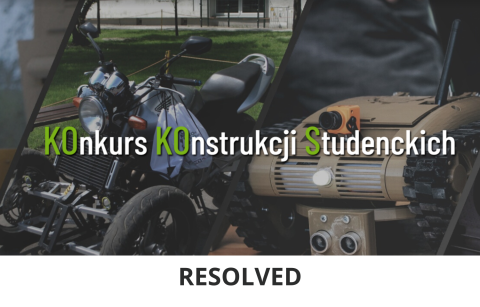The purpose of the KOKOS competition is to select and reward the most talented young constructors.
Congratulations to the PUT Rocketlab team and students from the Public Transport Science Club!
“As PUT Rocketlab, in this year's edition of the competition, we took first place in the "Joker" category, presenting one of our most technically advanced projects - Turbopump, its task is to increase the efficiency of liquid and hybrid rocket propulsion systems. It is the first prototype in Poland and the second in the world made by a student team, the development of which took thousands of hours of work of numerical analysis, its implementation would not be possible without the support of ZUT Projekt in the field of machining and countless hours of work on machines.
Such an advanced project required significant interdisciplinarity from the persons involved, supported by scientific reasoning, which translated into a high degree of optimisation of the structure and was appreciated by the jury of the competition. Winning the competition greatly motivates us to further work, we are facing the next stages of testing and improving the turbopump, so that in the future we can implement it in rocket structures.
The Scientific Organization of Public Transport Engineers submitted two projects in the RAILWAY category - "PUTcab II" - a student project of building a train driver's station simulator created for educational purposes and the winning one - "Adaptation of the PUTrain locomotive structure to be partially powered by alternative energy sources".
“The project is a concept of installing photovoltaic panels on the PUTrain locomotive both on the roof and on the side wall of the locomotive. The obtained solar energy will be processed and stored in traction batteries, and then it will be used to power the traction motors of the PUTrain locomotive. As part of the research work, the efficiency of the installed photovoltaic modules will be measured in various lighting, atmospheric and dynamic conditions, also adjusting the angle of inclination of the photovoltaic modules on the side wall in order to achieve the highest efficiency of the system”.
Congratulations to both teams

